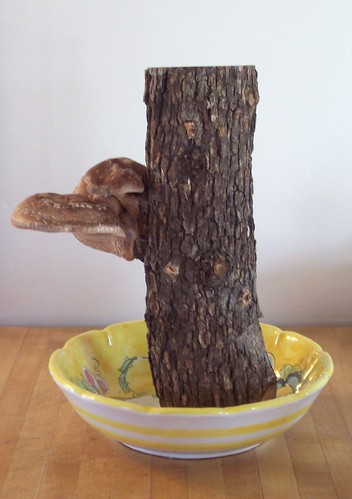A couple weeks ago, for biology, we sent away for a Shiitake-mushroom-growing kit. We have since grown (and eaten) a cluster of mushrooms. Some Q&A about mushrooms:
How can I tell which wild mushrooms are poisonous?
Contrary to popular belief, there is really no discerning characteristic that all poisonous mushrooms share. Since only about 5% of wild mushrooms are edible, I wouldn’t recommend eating a wild mushroom unless you are a hundred percent sure that it isn’t poisonous.
What is the life cycle of a mushroom?
(From ArticleClick.com)
Most mushrooms reproduce asexually by releasing thousands of spores through their gills into the open air for dispersion into the environment. Every spore is capable of germinating to create a new hypha. Hyphae are masses of intertwined filaments of cells which are the morphological unit of the fungus. When a thick mass of hyphae forms it is called mycelium or mycelia. Mushroom mycelium is usually white in color with a rough, cottony texture. Root like growth is called rhizomorphic.
When spores germinate they consume the water and nutrients from their environment and begin to reproduce. The medium that mushroom mycelium grows on is usually called substrate. Before the mushroom can start to form fruit bodies the mycelium colonizes the substrate fully and when the environmental conditions are right the mushroom emerges to produce more spores.
What different kinds of mushrooms are native to what areas?
Probably the most common edible mushroom, the Button Mushroom, is native to Europe (and North America.) The Portobello is also native to Europe and North America. The Shiitake is native to East Asia. The deadly Death Cap is native to Europe, North Africa, North America, Australia (SE), and New Zealand.

Mushroom Links:
Mushroom Life Cycle
Cornell University Virtual Library: Mycology
Lost Creek Mushroom Farm (supplier)
Fungi Perfecti (supplier)
Diagram of the mushroom life cycle.














2 comments:
This is a fascinating way to explore fungi. Thank you.
On our list of to-dos!
Post a Comment